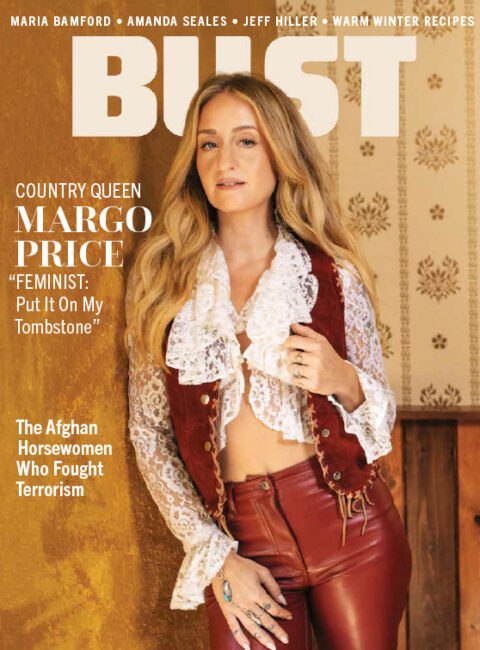Photographer Aline Smithson has been creating beautiful and bizarre works of art for more than 20 years. I chatted via email with the founder of the influential online photo magazine Lenscratch, and I’m excited to present a window into her work and process in the newest installment of our interview series Lady Shooters.
Smithson once described her work this way: “As an artist, I try to look for or create moments that are at once familiar, yet unexpected. The odd juxtapositions that we find in life are worth exploring, whether it is with humor, compassion, or by simply taking the time to see them. I have been greatly influenced by the Japanese concept of celebrating a singular object. I tend to isolate subject matter and look for complexity in simple images, providing an opportunity for telling a story in which all is not what it appears to be. The poignancy of childhood, aging, relationships, family, and moments of introspection or contemplation continue to draw my interest. I want to create pictures that evoke a universal memory.”
 Monkey Mask
Monkey Mask
Describe the type of photography you do and how you got your start?
I think of my photography as having equal parts humor and pathos. I am definitely a conceptual photographer—drawn more to images I see in my mind than images I see in the world. But I work both ways.
I came to photography from the art world, influenced by Los Angeles painters such as Baldessari, Diebenkorn, and Ruscha—and Hockney and Whistler from England. I always thought I would end up as a painter. I was a fashion editor for a decade in NYC and was influenced by photographers like Guy Bourdin, Helmut Newton and Horst. So I pull from those visuals in my own work.
I got a late start in photography—I took a class on how to better use my camera and was hooked. It dawned on me that I had been surrounded by photography my whole life (my father and uncle were photographers) and never considered it my path. But once I realized that I could create art with a camera, I was on my way.
 “Favorite Condiment”
“Favorite Condiment”
Do you make pictures every day, or at least think about making pictures every day?
Well, I write about photographs every day, and teach—so if I’m not thinking about my own work, I’m thinking about someone else’s photographs and how they are impacting the current photographic zeitgeist.
I would say that I think about making pictures every other day and try to get a camera in my hands once or twice a week…when I’m driving in L.A., I see so many photographs I want to take, but don’t...I always think I will go back and capture them, but then forget.
 “Red Nails and Daisies”
“Red Nails and Daisies”
You launched Lenscratch in 2007 as a platform for exploring contemporary photography. In what ways would you say contemporary photography has changed since then, specifically for women?
When I started out, all the gatekeepers were men, but over the last 10 years, the photo landscape has completely changed. Almost all photo center and festival directors are women; there are more women in power as curators, gallerists, editors, and publishers. There are more women behind the camera, using photography to tell their stories.
And the result is what goes onto the walls is no longer focused on the external, but also the internal, with projects about things close to home, projects about race, gender, sexuality, mental illness—personal forays into subject matter that was previously deemed not worthy of exhibition or consideration.
 “Mother”
“Mother”
What are you working on now?
I have three main projects that I’m working on currently, but I’m always making little side projects and just photographing the world because I can. I got a commission from the Smithsonian Air and Space Museum and I have been making a series of portraits of all the immigrants in my life—very formal, heroic portraits like the ones painted in the 1800s. I have been working on that for a year and a half. I am also working on a long term project about my father, who was the only person in his family to leave the Mormon church. I have photographed in the tiny ghost town of Eden, Arizona, started by his father at the turn of the century—it’s a way of connecting to my father, his history and legacy in a more profound way. I’m also working on a series of portraits, captured on film and then “wounded” with bleach and other chemicals as a way to speak about the loss of the photograph as object in future generations.
 “Cory”
“Cory”
 “Lisa”
“Lisa”
Any advice for someone picking up a camera for the very first time (not a camera phone, but a real life camera)?
Make mistakes. Then make more mistakes. The best work comes out of failure. Don’t just photograph what you see through the viewfinder, examine ways to intervene as an artist with your images. You best work is right under your nose, the places and people that are unique to you.
Work hard on your mastery of the equipment, of the history of the medium (shoot film, use the darkroom, try alternative processes), learn about the photography community….and most importantly, don’t make this journey all about you.
 “Riley as a Horse”
“Riley as a Horse”
all photos courtesy Aline Smithson
More from BUST
Photographer Vivian Fu Explores Race, Gender, Sexuality—And Food: Lady Shooters
Photographer Jackie Dives Tells Stories That Need To Be Told: Lady Shooters
Photographer Melissa Bunni Elian Explores “Different Avenues Of Blackness”: Lady Shooters

